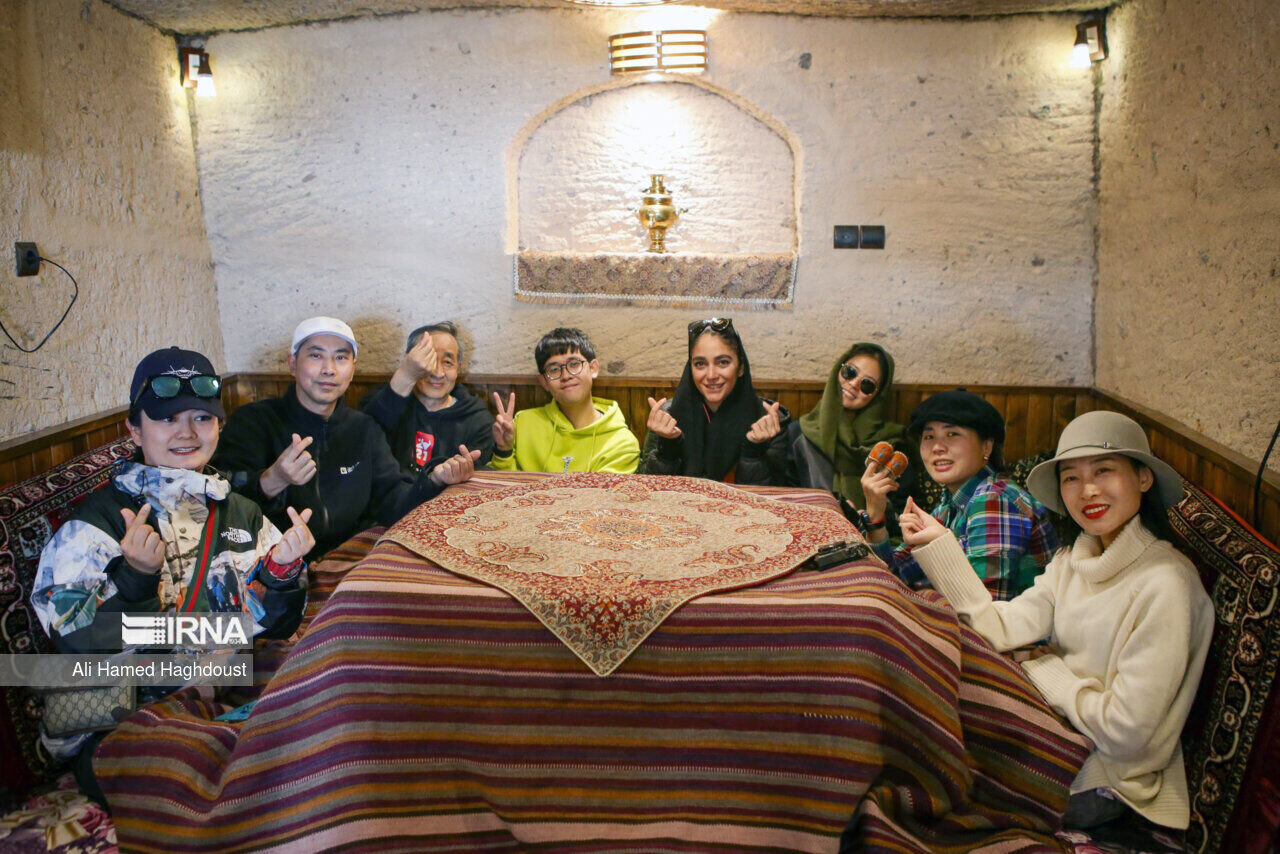East Azarbajian earns $30m by visits of foreign tourists in six months

TEHRAN—East Azarbaijan tourism industry boasts unique economic potentials and generates sustainable employment. Foreign tourists boosted the province’s economy, and their visits and stays helped generate $30 million for the province during the first half of the current Iranian year (March-September 2025).
Head of East Azarbaijan Cultural Heritage, Tourism, and Handicrafts Department Ahmad Hamzehzadeh told IRNA that the unique capacity created in various fields of health tourism, sports, cultural and historical, nature tourism, geotourism and education attracted more than 30,000 foreign tourists in the first six months of this year, despite all the special events and conditions.
Considering the announcement by the World Tourism Organization that the minimum spending of each tourist in Iran is $1,000, $30 million in foreign currency has entered the province, he added.
Hamzehzadeh announced that more than 1,350 licensed units are operating with more than 30,000 employees across the province, and this has served as an infrastructure to attract domestic and foreign tourists to the province.
He noted that this industry has a very high employment volume, and in the smallest tourism unit, such as a small restaurant, more than 15 people work, and in larger units, more than 300 people work.
One of the hidden and visible capacities of East Azarbaijan tourism is the presence of foreign students in this province. One of the important elements and indicators of tourism in the world is the length of stay of tourists, which shows its income and economic benefits more.
Frequent tourists increase this advantage. Under these conditions, foreign university students have this advantage. Of course, this advantage must be respected because students have constant and continuous trips and will spend at least until the completion of their studies in the city where they reside. Accordingly, this very large capacity must be used for cultural and economic development.
Also, Deputy Head of East Azarbaijan Cultural Heritage, Tourism, and Handicrafts Department Alireza Bairamzadeh, said: “According to the studies and planning carried out in the form of specialized foreign tourism desks, the largest volume of foreign tourist spending has been recorded and a specialized desk has been established for these countries, and relevant matters are being followed up in cooperation with relevant organizations, including tourism organizations and chambers of commerce. The mentioned specialized desks include Turkey, Iraq, the Republic of Azerbaijan, Armenia, Georgia, Russia, Eurasia and China.”
He stated that the cultural affinity of these countries due to their proximity to the province, high economic exchanges between various manufacturers and factories, and two-way trade have also resulted in the highest foreign exchange earnings in the field of tourism.
Bairamzadeh added: “This is the best and least expensive way to circumvent sanctions on one hand, solve the unemployment problem on the other hand, and fundamentally confront the enemies' Iranophobia project.”
He noted: “On one hand, we should also be proud of the scientific ability of East Azarbaijan province, which has the ability to attract foreign students, despite major competitors such as Turkey, which has the power to accept young Iranian, Iraqi, and Azerbaijani students on its agenda. This is a kind of revival of the rich history of this province, which, in Rab'-e Rashidi, one of the greatest scientific centers of its time, used to accept scientists from different parts of the world, from China and India to Europe.”
Meanwhile, Chancellor of Tabriz University Mohammad Taghi Alami, pointed out that East Azarbaijan is one of the leading provinces in accepting foreign students, saying that currently, 8,300 foreign students are studying in the province's universities, 4,500 of whom are studying in Tabriz city and 3,500 at Tabriz University.
He noted that out of 5,600 foreign students who applied for education this year, only 15 percent were accepted, which indicates a scientific and logical process in admissions.
Alami also said that the presence of foreign students has economic effects, adding that the presence of more than 4,500 foreign students in Tabriz results in a turnover of about $60 million per semester, which contributes to the city's economic prosperity.
East Azarbaijan has infrastructures for historical and natural tourism and a four-season climate. It has unique historical monuments that house several world-class monuments and several others are in the process of being studied for possible registration on the UNESCO World Heritage List.
East Azarbaijan, in addition to its proximity to the border, Europe, the gateway to Eurasia, and the benefits of air, rail, and land transportation infrastructure, has more than 4,000 historical and ancient monuments, of which 2,075 have been registered on the National Heritage List.
What has increased the importance of tourism and historical monuments in East Azarbaijan province in recent years is the number UNESCO-listed monuments, which have currently increased to six, including Tabriz historic bazaar complex, the largest traditional and roofed bazaar in the world, the Saint Stepanos Monastery of Jolfa, the Aras Global Geopark, the Jamalabad Caravanserai of Mianeh, Khajeh Nazar Caravanserai of Jolfa, and Goyjeh-Bell Caravanserai.
KD
Leave a Comment